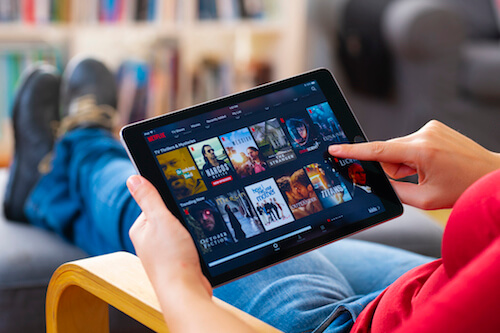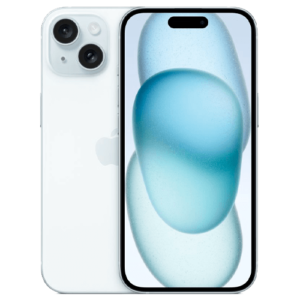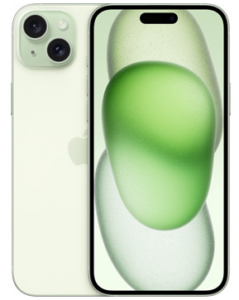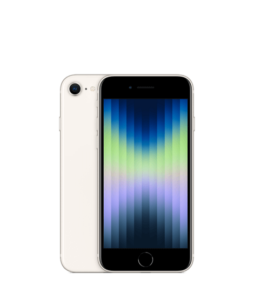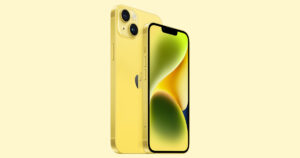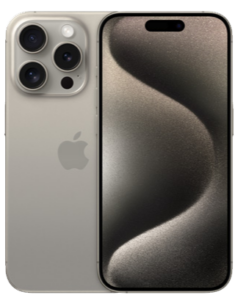Your search for the best iPhone models is over, starting with the 15.
The Best iPhone Models for Value, Performance, and Battery Life
It’s not a bird or a plane—it’s the Apple iPhone, and we’re here to share the best models this year.
Predictably, the star is the iPhone 15 and its variations—but we’ve also included the iPhone SE and iPhone 14 to meet other needs.
Guide to cell phone carriers for iPhones:
What to look for in an iPhone
Each iPhone model has differences—some blatant, some subtle. Here’s what we recommend you consider when picking a new phone.
Features to consider in iPhones:
- Price
- Available carriers
- Storage
- Chip
- Battery life
- Camera
- Display
- Size
- Color
Price is, obviously, a big one. You shouldn’t spend all your money on a phone, but you also don’t want to cheap out on an iPhone model that won’t meet your needs. You can try the iPhone Exchange Program or invest in a refurbished iPhone if the cost is too high.
Luckily, iPhones are extremely popular, so once you’ve bought your expensive pocket computer, you should be able to sign up for cell service with just about any carrier.
Storage is crucial, especially since iPhones have various storage options (you’ll spend more $$ on more GB). iPhones start at 128 GB, which can hold thousands of photos and songs. But this generous amount may not be enough if you’re a prolific photographer or never delete anything. You might want a phone with more storage space or invest in a monthly iCloud+ plan.
An iPhone chip is the equivalent of a CPU, so you want a good one. You don’t need to fuss too much about this since iPhones generally have potent chips, but it’s worth noting that you’ll typically get a newer and more improved chip with a newer iPhone.
You don’t want to spend a bunch of money on a phone with a terrible battery life, so pay close attention to the battery specs. Right now, we favor the iPhone 15 Plus for long-lasting battery—but no matter what you pick, you can help the battery last longer by not charging your phone overnight.
Casual camera users will be happy that each iPhone release has successively better cameras. However, more serious videographers and photographers may want an iPhone with state-of-the-art camera features. Usually, each line has a phone with a better camera (like the iPhone 15 Pro Max versus the iPhone 15).
A better display means better image quality but can also affect your phone’s sensory abilities. And a phone that’s more sensitive to your fingerprints is easier and more fun to use.
As for size, the new iPhone 15 comes in big and bigger, which is a shame. Some of us are partial to the iPhone 13 mini and wish there was a new version. Luckily, if you have small hands and need something to fit comfortably in your palm, the iPhone SE is an excellent 4.7-inch option still sold in the Apple Store.
Finally, color. Color might not seem important, but it kinda is—you have to look at your phone a lot, so getting one with a vibe you like makes sense. Different iPhone lines have different color palettes. (If you despise all the colors in an iPhone model line, it might be a sign that the line isn’t for you.) The newest line, iPhone 15, comes in soft pastels that call back to the iPhone 12 and iPhone 12 mini.
iPhone 15: Best all-around
The iPhone 15 is the standard iPhone of the new line, and boy, does it offer a lot, even though it costs less than other iPhone 15 models.
This new phone has all-day battery life and wireless charging. It has a special activity display called Dynamic Island (lifted from the iPhone 14 Pro), and one of its Smart HDR 5 camera lenses is 48-megapixel quality.
It’s also IP68 waterproof, which is more waterproof than most outdoor security cameras, and it comes in three storage options (128 GB, 256 GB, 512 GB) and five colors (blue, green, pink, yellow, and black).
This iPhone also has a feature never seen before: USB-C charging. Buh-bye, lightning port. The change is good news for many folks, though it may get tricky in houses with multiple Apple devices. USB-C cords, lightning cords, Apple Watch magnetic chargers … maybe invest in some multi-purpose wireless chargers?
It’s also the cheapest iPhone of the 15 line at around $799 for the 128 GB version. (Prices may vary depending on where you buy your phone.)
If you want the latest and greatest iPhone without spending extra money, this model is definitely for you. But if you have a specific need, like the best camera or battery around, you may want one of the iPhone 15 variations. Luckily, we’re about to talk about the iPhone 15 Plus.
iPhone 15 Plus: Best battery life
The iPhone 15 Plus is a slightly upgraded version of the iPhone 15. Its main differences? It’s bigger and has a significantly longer battery life. Oh, and it costs more, of course.
If you’re one of those people who enjoys a larger screen, you’ll be happy with the size of the 15 Plus. It’s got a good six inches of height and a quarter of an inch of width on the regular iPhone 15.
Its battery is also more robust than the standard 15's. Apple projects that the iPhone 15 Plus battery can withstand approximately six more hours of downloaded video playback, four more hours of streamed video playback, and 20 more hours of audio playback than the iPhone 15 battery.
But you’ll pay a literal price for these improvements: The iPhone 15 Plus runs about $100 more expensive than its sister phone.
iPhone SE: Best budget
There’s not really such a thing as a cheap iPhone, but the iPhone SE comes as close as humanly possible.
The iPhone SE is a dream for those of us with small hands. At 4.7 inches wide, it’s 1.4 inches slimmer than the 15. And while it doesn’t have the same color selection range as other models, you can pick between red, starlight (silvery white), and midnight (bluish black).
It’s also a dream for anyone with limited funds. The 64 GB SE retails at around $429. That’s about half the price of some of the other models we recommend.
Unfortunately, with the price cut comes a feature cut. Compared to the iPhone 15, the SE has a more basic camera, a shorter battery life, smaller storage, less waterproofing, no facial recognition … we could go on. But hey, as far as texting, calling, and surfing the web goes, this phone will more than get the job done.
And, like all iPhones, the SE is compatible with all your other Apple devices. That means your iPad, Mac, AirPods, Apple Watch, and Apple HomePod will function as normal even with this iPhone lite.
iPhone 14: Best value
The iPhone 14's specs are just a smidge below the base iPhone 15's, but the price is more agreeable to your pocketbook.
Like the 15, the iPhone 14 offers wireless charging, IP68 waterproofing, facial recognition, three storage size options, and a similar battery life. Basically, the works.
The main differences you’ll care about between the 14 and the 15 are the cameras, the charging cables, the colors, and the lower price.
Like the base 15 model, the standard iPhone 14 has two primary camera lenses, both at 12-megapixel quality. So one of the lenses is the same as with the 15—but the other is one-fourth the resolution. If you compare a photo from each phone, you’ll immediately see leaps and bounds in image clarity between the two.
And then there’s the charging cables. While the iPhone 15 has adapted to USB-C, the 14 still uses a lightning port. Depending on which cable is more ubiquitous in your home, you may have feelings about whether the lightning port is a pro or a con, but it’s certainly something to consider either way.
You'll be pleased with your options if you're particular about your iPhone colors (some of us at Reviews.org are guilty as charged). The iPhone 14 comes in several colors, from pale blue, purple, and yellow to vivid red to neutral starlight or midnight.
Finally, the price. Because the 14 is last season’s model, it runs about $100 cheaper than the iPhone 15. That’s not a ton of money, but it’s a nice little discount you can save to spend through Apple Pay on a rainy day. And remember—the iPhone 14 is very similar to the iPhone 15, so it makes sense that it’s just slightly cheaper.
If the iPhone 14 sounds like the phone for you, there are three other versions—the iPhone 14 Plus, the iPhone 14 Pro, and the iPhone 14 Pro Max—that may be worth looking into.
iPhone 15 Pro: Best performance
The iPhone 15 Pro has an outstanding balance of style and function, making it a good choice for anyone who wants an iPhone 15 that's a little better at everything. Unfortunately, though, you'll pay through the nose for these upgrades.
The iPhone 15 Pro is slightly smaller than the iPhone 15. It has a matte back instead of a glass one to compliment its four colors (black titanium, white titanium, blue titanium, and natural titanium). It also has a longer-lasting battery life (though not as long as the Plus's), a more powerful computer chip, and a high-storage 1 TB version.
This phone also has some major camera upgrades. The regular iPhone 15 has .5X, 1X, and 2X zoom; the iPhone 15 Pro adds 3X zoom. It also has night portrait mode and ProRes 4K video recording capabilities.
Oh, and if you want the best iPhone camera possible, another version of the iPhone 15 Pro model—the iPhone 15 Pro Max—takes even better photos with the clarity of 5X zoom. Photos from portrait mode to your standard snaps look incredible when taken with a Pro Max.
But get ready to scrape together every spare cent you can, because the iPhone 15 Pro comes in at around $1,000. And the iPhone Pro Max costs about $200 more than that!
Recap: What are the best iPhone models?
What’s the best iPhone this year? The 15 series, the SE, and the 14.
- iPhone 15: It's expensive, but it has good features, and most folk who want to upgrade to a newer phone will be happy with it.
- iPhone 15 Plus: For a longer-lasting battery, put down a little more money for an iPhone 15 Plus.
- iPhone SE: If the price tags on these newer iPhones give you a heart attack, you'll be happy to see this more basic but less expensive model.
- iPhone 14: Last year's model is this year's deal! Get a phone almost as good as the 15 at a lower price.
- iPhone 15 Pro: If you want a phone that runs like a dream, put in some extra cash and get an iPhone 15 Pro.
If none of these models seem right, you can get a secondhand or refurbished older iPhone. While we doubt the beloved iPhone 7 works with the latest iOS and even the ultra-cool-sounding iPhone X may be too dated, it should be easy to get your hands on a decent iPhone 11, iPhone 12, or iPhone 13.
Or, if you've decided against an iPhone in general, we've reviewed other options that might interest you, like the Google Pixel, Samsung Galaxy, and other Android phones. We even have an article to help you make the switch to Android.
Methodology
When picking our top iPhones, some of the things we considered were:
- Price
- Available carriers
- Storage
- Chip
- Battery life
- Camera
- Display
- Size
- Color
Like everything else, the best iPhones are trend-based. The newer releases tend to be preferable because they usually have better features and more updated software and hardware:
- The highest storage capacity
- Fastest chip
- Longest battery life
- Highest-quality camera and display
They also tend to have higher prices, much to the dismay of about a billion people.
We typically list the new iPhone as the best by default. But we also look out for more affordable phones, so we included the newly discounted iPhone 14 and the almost-cheap iPhone SE.
There are a lot of great iPhones we could have included in this piece. But just because we don't feature them, that doesn't mean that you're wrong for preferring your trusty iPhone 13 Pro Max or iPhone X.
Related Articles

